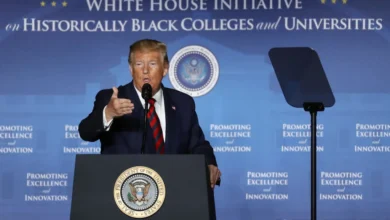India is going through a disaster. Many political leaders are being criticized and asked many questions regarding the practice being followed by them. With trending, hashtags like #nonsensemodi people have shown a lot of rage against our prime minister, Narendra Modi. People are angry at him for not taking proper action against the various situations in the country and not getting his priorities sorted out. Considering the rising COVID cases in our country, the GDP and economic crisis, and the floods situation in Assam, he still has agreed to attend next month’s Ram Temple Bhoomi Pujan in Ayodhya.
The Ramjanmabhoomi Teerth Trust, established by the government to oversee the construction of the temple has invited Mr. Modi and several other senior leaders including former Deputy Prime Minister, L.K. Advani and Defense Minister Rajnath Singh, to attend the “Bhoomi Poojan” or groundbreaking ceremony of the proposed Ram temple in Ayodhya at the beginning of August. The proposed dates are August 3 and 5, with the later date being more likely.
However, objections have been raised by other political leaders, including the leader of the Nationalist Congress Party (NCP), Sharad Pawar, who said that the priority of governments should be to eradicate COVID-19 rather than “construction of a temple.”
Congress’s Hussain Dalwai raised objections to what he described as historical and constitutional grounds. “I would like to make it known that when [the late Prime Minister] Nehru was invited to the Bhoomi Poojan of the Somnath Temple, he refused by reasoning that he was the leader of a secular nation. But today, things like this have changed. I don’t think PM [Modi] should be going to the event, but now they’re all going – so it’s not a big issue. He has to decide whether or not to go, “he said in a television interview.
D Raja called this a case of misplaced priorities. “Today our country is fighting the COVID Pandemic. We also need to find a peaceful solution to the border dispute with China, but PM Modi is going to Ayodhya for the foundation ceremony of the Ram Temple. PM Modi should understand that we are still a secular republic. We need to be equal to all religions as he has taken the oath of the Constitution.”
The surprising fact is that all the political leaders argue that the PM should focus on this or that, but why is the Assam situation ignored by every political leader, our media, and even the Prime Minister. The repetitive nature of these floods has led to a misconception in their minds that it is normal and is going to happen every year, but if they had paid attention to the issue and made some reforms, they could have helped the situation and prevented it from happening.
This year, the floods have been bad and are threatening to be just as bad in Bihar. But all you learn from the media is the Sachin Pilot-Ashok Gehlot drama. Every year, we hear about the floods first in Assam, then in Bihar. Just as we hear about the heatwave in northern India or the monsoon in Kerala. Every year, we read about the animals drowning in Kaziranga National Park and assume that some people must have died as well. We ‘re only looking up when the death toll is 100, as it has been this year. Pictures of northern Bihar villages flooded with water are as basic as the snowfall in Shimla. We see deaths in Bihar as they cross over 500, as they did in 2017.

Floods are no mistake at all. Flooding at irregular intervals is part of the eco-system of the Brahmaputra Valley and the Terai region of the Himalayas. The multitude of rivers coming down from the Nepalese hills to the north of Bihar and the mighty Brahmaputra coming from Tibet bring life-sustaining water and soil to these regions. Rains are bound to vary, so the excessive release of water through floods is a normal phenomenon, known for centuries.
Although floods are inevitable, flood damage is not a natural phenomenon. This is often the result of human interference, sometimes the faulty model of what we call ‘growth.’ Deforestation in the catchment area, the development of human habitation on the banks of the river and in the floodplains, the encroachment on wetlands, the shift in crop patterns, and, inevitably, rapid-fix attempts to manage the floods are primarily responsible for the destruction caused by the floods.
Indeed, on Sunday, Prime Minister Narendra Modi, along with Chief Minister Sarbananda Sonowal, discussed the flood situation in Assam and assured the state of assistance in coping with the floods that have claimed 81 lives so far this year. Discussing the flood situation with Sonowal on the call, Modi also asked about the COVID 19 scenario and ongoing attempts to dampen the raging flame of Oil India’s Baghjan gas. Even, a lot of questions have been asked about why he hasn’t visited the state yet? Many say that he is not visiting Assam because of the anti-citizenship law agitation. He also canceled his travel to Assam twice in January when he was to inaugurate the 3rd Khelo India Youth Games. The explanation is that the All Assam Student Union (Aasu) and other groups at the forefront of the protests threatened to unleash “the people’s outrage” on Modi if he had visited Assam.

Several environmentalists have argued that India needs an integrated approach to flood management. This would mean thinking at the same time about water management, spatial planning, land use, forestry, transport, and economic development, as well as nature conservation. Goswami reminds us that the solution can not be found within India ‘s borders alone. A holistic solution to the Assam floods will include the entire Brahmaputra drainage area of China, Bhutan, Bangladesh, and India. We need to work with our neighbors to provide better information, warnings, and assistance in handling excess discharge.
In other words, we need politics and economy, diplomacy and development, engineering, and ecology. We need to move quickly.
It includes the mobilization of the national political will. Nationalism is not about building temples.
Real nationalism is about taking on a true and difficult problem of national importance, giving it undivided attention, figuring out a new approach, spending significant national resources, and seeing it through.
A national response to the floods in Assam and Bihar is a good way to launch a constructive nationalism movement.




